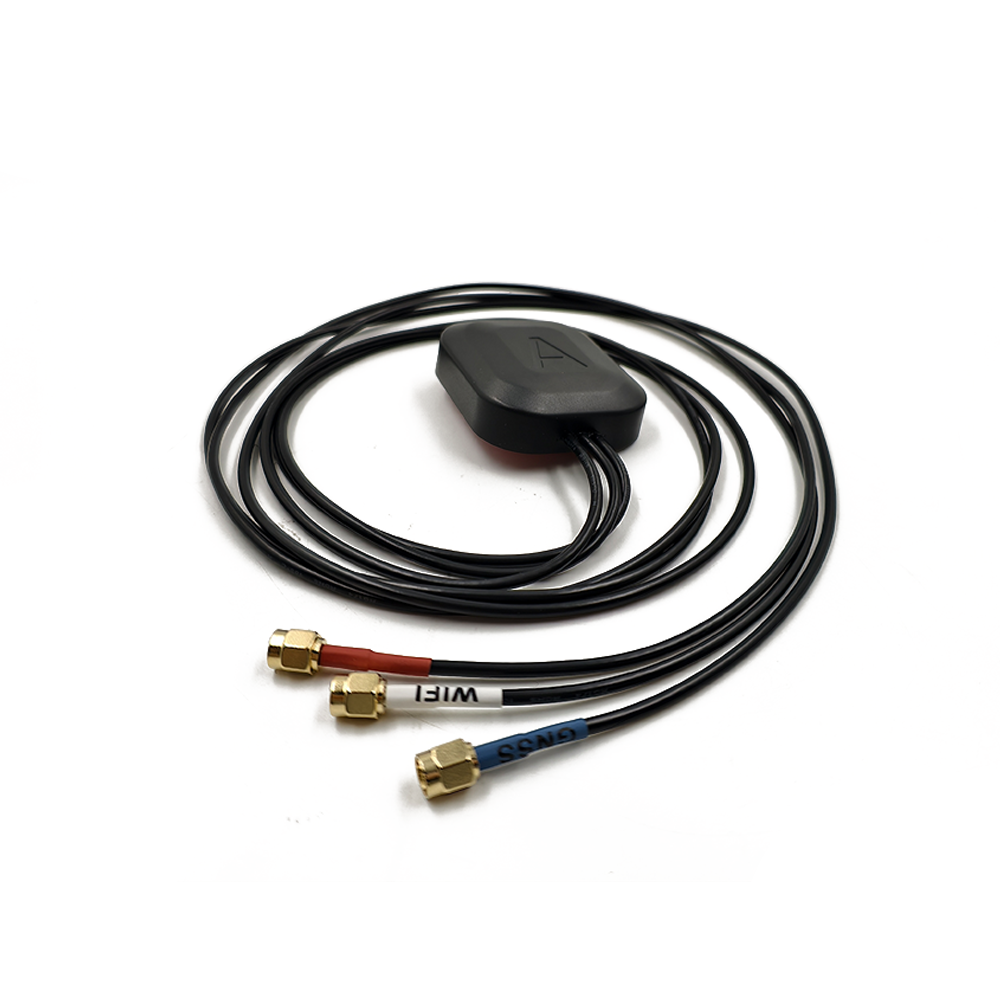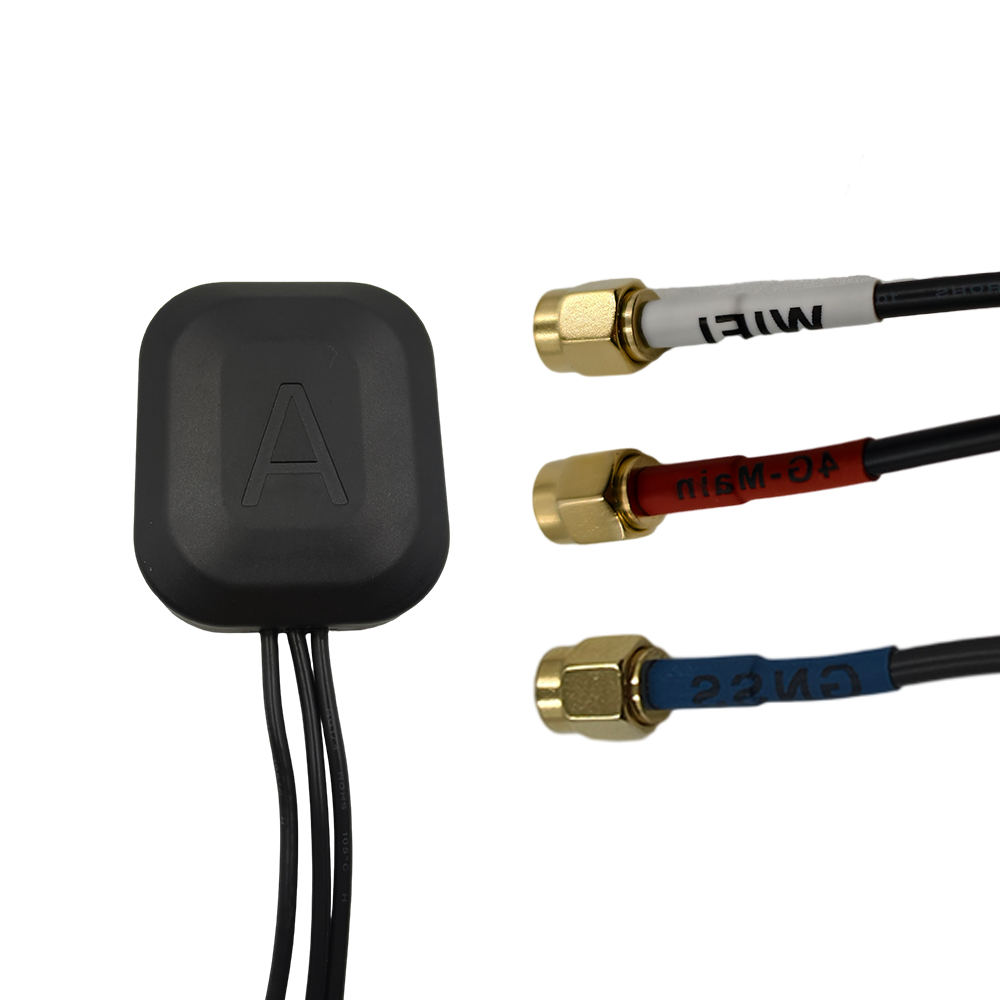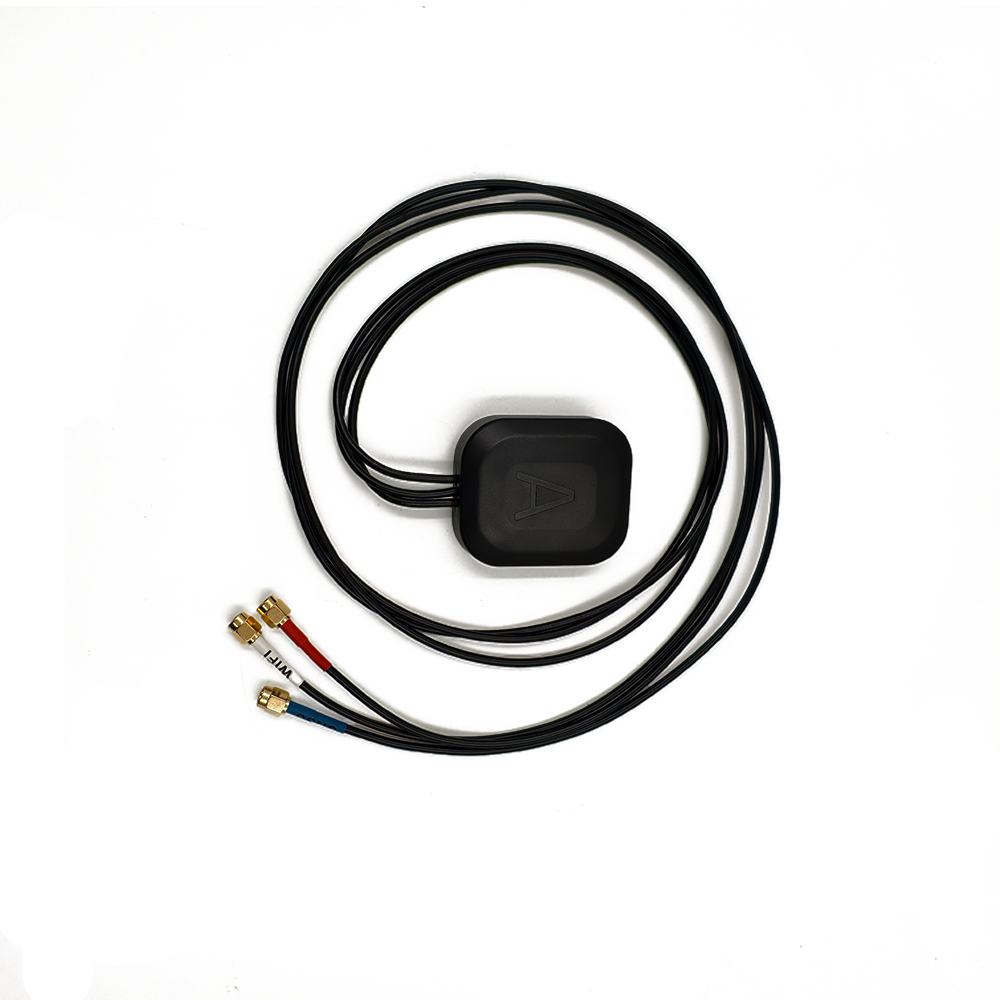The capabilities unlocked by multi-band GNSS antennas have catalyzed a revolution across industries that depend on precise, reliable, and continuous positioning. They are the enabling hardware that allows algorithms and systems to deliver centimeter-level accuracy in real-time, transforming a wide array of traditional and emerging applications.
Key Applications:
Precision Agriculture: This is one of the largest and most mature markets. Multi-band RTK systems guide tractors, harvesters, and sprayers with 2-3 cm accuracy, enabling hands-free operation 24/7. This enables auto-steering, variable rate application (VRA) of inputs, and yield mapping, leading to massive gains in efficiency, reduced input costs, and increased yields. The robustness of multi-band allows operation to continue reliably even with vehicle movement and partial signal blockages.
Professional Surveying, Mapping, and GIS: The standard tool for the modern surveyor. Multi-band GNSS provides faster initialization times, the ability to work in more challenging environments (under light tree cover, urban areas), and longer baseline lengths between base and rover. It is essential for cadastral surveying, construction site preparation, topographic mapping, and GIS data collection.
Unmanned Aerial Vehicles (UAVs) and Aerial Mapping: Multi-band PPK (Post-Processed Kinematic) and RTK have revolutionized drone-based photogrammetry and LiDAR mapping. By providing a precise geotag for every aerial image (to within 1-2 cm), the technology eliminates or drastically reduces the need for ground control points (GCPs). This slashes fieldwork time by up to 90% and enables the rapid creation of highly accurate orthomosaics, digital surface models (DSMs), and 3D point clouds.
Autonomous Systems and Robotics:
Automotive: Multi-band GNSS is a critical sensor for autonomous vehicles (AVs) and advanced driver-assistance systems (ADAS). It provides the absolute position anchor that is fused with LiDAR, radar, and cameras to create a failsafe navigation system. Its ability to mitigate atmospheric error is crucial for functional safety and meeting stringent automotive standards.
Mobile Robots: Used for autonomous mobile robots (AMRs) in logistics warehouses, last-mile delivery robots, and agricultural robots for weeding and harvesting.
Construction and Machine Control: Bulldozers, graders, and excavators equipped with multi-band GNSS systems can automatically guide their blades and buckets to the exact design grade with centimeter-level precision. This improves efficiency, reduces material waste, eliminates rework, and enhances safety on dynamic construction sites.
Scientific and Structural Monitoring: Used for monitoring tectonic plate movement, volcanic deformation, landslides, and the structural health of large critical infrastructure like dams, bridges, and skyscrapers. The integrity and long-baseline capability of multi-band systems are essential for detecting millimeter-level movements over time.
Aviation and Maritime: For precision approach and landing in aviation (using GBAS and SBAS) and for precision docking, dredging, and waterway navigation in the maritime sector, multi-band antennas providing access to L1/L5 signals are becoming the standard for improved integrity, accuracy, and reliability.
Future Trends:
Miniaturization and Integration for Mass Markets: The relentless drive is towards smaller, lighter, and lower-cost antennas that retain high performance. This is critical for integration into consumer devices (smartphones, wearables), IoT asset trackers, and small drones. Advances in materials (e.g., metamaterials, ceramics) and design techniques (e.g., AI-optimized shapes) are key to this trend.
Tightly Coupled Integrated Navigation Units: The future lies in deeply integrated systems. We will see more antennas that package the RF front-end, a multi-band GNSS receiver chip, and an inertial measurement unit (IMU) within a single housing. This enables ultra-tight sensor fusion at the hardware level, providing seamless, continuous navigation through GNSS outages in urban canyons and tunnels.
AI-Enhanced Performance: Research is exploring the use of artificial intelligence and machine learning to optimize antenna performance in real-time. A "cognitive antenna" could potentially adapt its pattern nulls to actively suppress jammers or dynamically adjust its characteristics based on the RF environment and application needs.
Ubiquity in Consumer Electronics: As costs continue to fall, multi-band GNSS will transition from high-end smartphones into mid-range and eventually all smartphones. This will enable a new generation of location-based services, highly accurate AR experiences, personal safety applications, and micromobility navigation that require better precision than current single-band solutions can provide.
Focus on Cybersecurity and Resilience: As GNSS becomes more critical, antennas and systems will incorporate features to detect and mitigate spoofing attacks. This could involve dedicated outputs for monitoring signal quality, the use of antenna arrays for direction-of-arrival detection, and deeper integration with inertial sensors for cross-validation.
Support for LEO-PNT and Fusion with Comms: The emergence of Low Earth Orbit Position, Navigation, and Timing (LEO-PNT) constellations (e.g., from companies like Xona Space Systems) will require antennas capable of receiving these new signals. The next generation may be "super-wideband" to cover traditional GNSS, LEO-PNT, and even satellite communication links, creating a ubiquitous PNT capability.
The multi-band GNSS antenna has evolved from a specialized geodetic tool into a critical enabling technology for autonomy and digital transformation across the economy. Its future is one of deeper integration, wider adoption, and ever-increasing intelligence, solidifying its role as the fundamental sensor for understanding and navigating our world with unprecedented precision.
Conclusion
The multi-band GNSS antenna represents a fundamental and transformative advancement in the field of satellite-based positioning. It is far more than a simple passive component; it is a sophisticated, active-electronic system that serves as the critical gateway to the new era of multi-constellation, high-precision GNSS. By enabling simultaneous access to signals across multiple frequency bands, it provides the essential raw data required to overcome the most significant historical barrier to accuracy—the ionosphere—and to unlock a new level of system robustness.
The advantages it delivers are profound and multifaceted. From enabling rapid and reliable centimeter-level RTK positioning to providing the integrity and redundancy mandatory for safety-of-life autonomous systems, the multi-band antenna has elevated GNSS from a useful navigation tool to a high-reliability sensor for mission-critical applications. Its impact is already deeply felt in surveying, precision agriculture, construction, and drone mapping, and its importance is rapidly growing as a cornerstone technology for the future of autonomous transportation and the spatially aware Internet of Things.
However, this performance excellence comes with inherent challenges. The design complexity, associated cost, and physical size of these antennas represent a significant engineering balancing act between electromagnetic performance and practical constraints. The necessity for rigorous phase calibration underscores a critical truth: the antenna itself is not a perfect transducer and can be a source of error if not properly characterized and handled within the processing workflow.
Looking forward, the trajectory is clear. The technology will continue its relentless evolution towards greater miniaturization, reduced cost, and deeper integration with other sensors, particularly inertial measurement units. This progression will drive its adoption into an ever-expanding array of devices and applications, gradually making high-precision, robust positioning a ubiquitous utility. The multi-band GNSS antenna will remain the indispensable foundation for this future, a powerful testament to the principle that in the chain of signal processing, the quality and integrity of the final output are irrevocably dependent on the quality of the initial input. It is the bedrock upon which the entire edifice of modern, precise, and reliable GNSS is built.




































































 Language
Language
 En
En Cn
Cn Korean
Korean

 Home >
Home > 








 18665803017 (Macro)
18665803017 (Macro)













